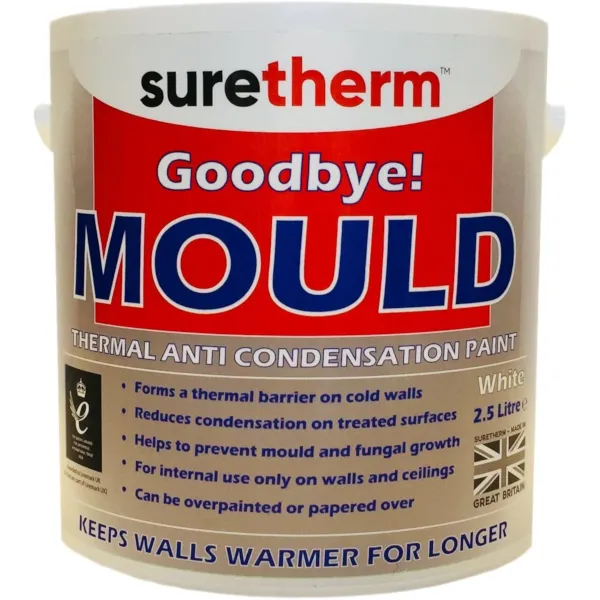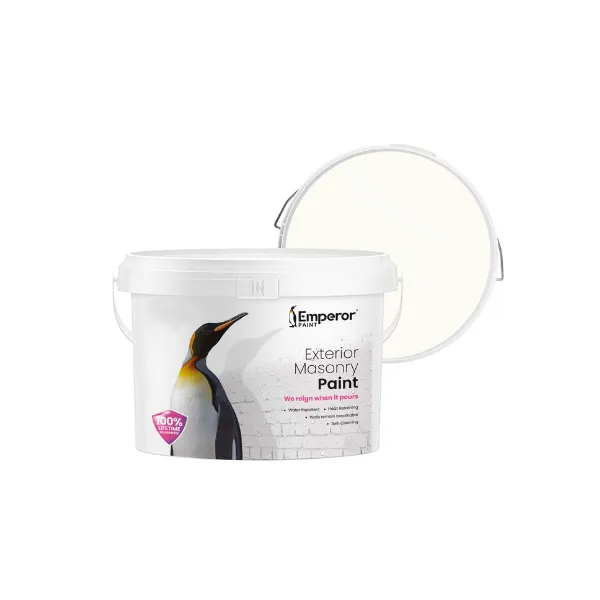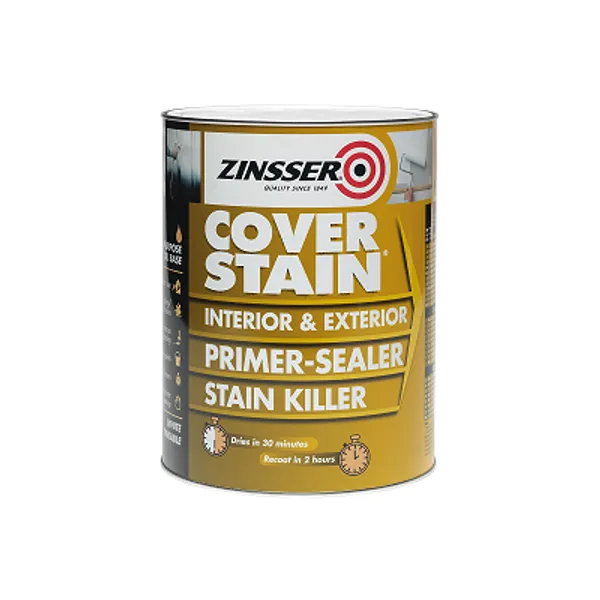How To Stop Damp & Mould Coming Through Walls
Does your home suffer with damp & mould on your interior walls? Unfortunately, in the UK many of us do, which can difficult to stop. Whether its a stain that won't go away or a wet wall causing paint & wallpaper to peel, there is a solution. Our experts have put together this guide in order to give you all the information you need in order to tackle the problem head on!

What Is Damp & Mould?
Before you can tackle damp & mould, it is important to understand what it is and what causes it first. Mould is a type of fungal growth that is caused by excess moisture on the inside of a property, often coupled with damp walls. The source of the moisture can either be internal, which can often be relatively easily solved, or external, which can be more difficult.
There are a number of common causes of damp & mould:
- Rising damp - rising damp is caused by moisture from the ground that travels up through the walls of a property by capillary action, caused by a failure or non-existence of a damp proof course (DPC). This is a rare form of damp that can be distinguished by wet patches that rise up the interior and exterior wall from the ground.
- Penetrating damp - caused by an external source of moisture through an external wall of a property. Moisture is absorbed by ageing brickwork or can travel through a defect in the external wall, such as a crack. This is one of the most common causes of damp & can be distinguished by wet exterior walls & any damage to brickwork such as cracks or spalling brick faces.
- Condensation - condensation can be caused by a lack of ventilation, particularly in winter when people close their windows and have their heating on.
- Water leaks - leaky pipes or other water leaks can cause isolated patches of mould on ceilings, especially near chimney breasts that can be prone to leaks.
How To Stop Rising Damp
In order to prevent rising damp, a damp proofing injection cream is injected into the mortar course. The cream becomes a liquid once it is placed into the brickwork, which can then be absorbed into the brickwork, creating a water repellent barrier that prevents moisture from soaking through the ground and up the wall.
It is recommended that you seek professional advice with rising damp as this is a less common form of damp that must be expertly dealt with.
How To Stop Penetrating Damp
Penetrating damp is a common source of damp that can be often solved at home yourself. It is important to first check your gutters for any blockages that could be causing excess moisture to soak into one part of the exterior wall. If clear, check your exterior wall for any obvious signs of damage such as cracks, crumbling mortar or spalling bricks. If you discover that your brickwork is damaged or in bad condition, this is a key indicator that moisture is transferring through your exterior walls. You should repair these areas using a good-quality exterior filler.
There are a number of waterproofing coatings that are designed to prevent water ingress on exterior walls, such as waterproof masonry paint & masonry cream. These are exterior coatings that are directly applied to exterior walls in order to create a water repellent surface that prevents rainfall entering the building. Here at Painters World we stock Emperor Paint, who offer both a coloured masonry paint & a clear masonry cream that create a water repellent surface on exterior walls, while remaining completely breathable, unlike brick 'sealers'. This prevents water from absorbing into the exterior wall while allowing water vapour from inside the property to escape.
Both Emperor Masonry Paint and Emperor Masonry Creme come with a lifetime guarantee and have been shown in independent tests to keep treated walls up to 6°C warmer on average when compared to an untreated wall. This is because wet walls transfer heat twice as fast as dry walls, meaning they result in significant heat loss.
Emperor Masonry Paint has been shown to prevent peeling & flaking thanks to its ability to prevent moisture from causing the paint film to fail, making it one of the most durable masonry paints available in the UK. Here at Painters World we stock the 12 standard colours of Emperor Masonry Paint, which includes some fantastic exterior shades.
Often, homeowners do not want to change the appearance of their natural brickwork, but still want to be able to protect it. That is why masonry cream is becoming increasingly popular. It penetrates into the brickwork and once dry, creates a completely invisible water repellent coating on brick, stone or concrete walls.
How To Stop Mould From Condensation
As an internal source of moisture, the best way to help prevent condensation is to improve the ventilation of your house. Avoiding overusing tumble dryers, using extractor fans and opening windows in order to maintain a regular airflow are all ways you can prevent a build up of condensation that will lead to mould. Furthermore, try and keep furniture away from walls, which can trap the moisture in one area, leading to large black mould spots. In winter time when opening windows can lead to heat loss, opting for a dehumidifier can be a an easy way to regulate moisture levels. Check out this handy guide on how to reduce humidity in a house in winter for more tips.
If mould is growing near window & door frames, this may be an indication that these areas aren't water tight, which can be leading to condensation gathering. If this is the case, you should look to resolve this issue in order to prevent mould growing on your window sill.
Alternatively, if the mould is growing in bathrooms, kitchens or other cold walls, an anti-condensation paint is a great option. Anti condensation paint is paint that is designed to prevent the formation of condensation on interior walls & ceilings. They achieve this by absorbing and retaining heat, which in turn allows them to reduce the chance of condensation forming.
Suretherm Anti Condensation Paint is an internal water-based emulsion that is specifically designed to help deal with internal mould and damp caused by condensation. It significantly reduces condensation by absorbing any heat that would ordinarily escape through the wall thanks to its glass microsphere technology. This heat prevents condensation from forming, helping to eliminate the conditions that black mould requires to thrive.
Simply applying two coats of Suretherm Anti Condensation Paint before you decorate will give you the protection you need against mould growth, leaving you worry free. It is perfect for bathrooms, kitchens, areas that do not have insulation or for industrial environments.
How To Stop Mould From Water Leaks
Damp patches and stains on ceilings, especially near water fixings and chimney breasts is an indicator of a water leak. Ultimately, as with the other sources of moisture, until you resolve the core issue, the mould and damp patches will remain. If you isolate the area of the leak, you should fix this as soon as possible as it will be impossible to prevent the growth of mould until this is done.
Getting Rid Of Mould & Redecorating
Once the ultimate source of moisture has been dealt with, the chances are you will want to redecorate the interior wall of your home so it looks like new.
The first stage is to clean the walls of the mould. It is crucial to wear protective equipment such as goggles, gloves and a mask in order to protect you from the mould. You can use a mould removing solution or a bucket of hot water and washing up liquid, depending on your preference. Using a wet cloth, wipe the mould from the wall thoroughly. If you are cleaning wallpaper, be careful how much water you use as this can cause the paper to peel.
Once the wall is completely clean, you can then start decorating. There are a number of anti-damp paints on the market, as well as primers that can prevent damp stains. What you opt for is completely up to you, however we have a number of favourites.
Stain Blocking Primer
The first option when it comes to blocking stains is a stain blocking primer. These are applied directly on to the stain before you apply your paint, sealing the surface and preventing the stain from being visible once painted.
Our personal recommendation would be to use Zinsser Coverstain, which is a low odour primer & stain blocker that acts as an undercoat that can be painted on to that possesses excellent stain killing performance. Stains of all kinds are permanently sealed so topcoats are blemish free, allowing you to redecorate your room without the worry of any damp stains reappearing, providing that you solved the source of the damp.
Stain Blocking Paint
If you want to paint directly over stains without the hassle of applying a primer, Zinsser Grade 1 is the best option. This is an example of an all-in-one stain blocking primer, sealer & paint, which prevents stains showing through your walls & ceilings.
Zinsser Grade 1 offers mould resistance as it contains a biocide to protect the dried coating against fungal degradation. It also dries with zero tension which reduces the likelihood of future cracking, flaking and peeling.
It can also be mixed in thousands of colours, including RAL, British Standard, NCS and equivalent shades of major paint manufacturer's colours, including designer ones. This gives you complete freedom to get that perfect colour for you, but in an ultimate performance paint like Zinsser Grade 1 that will stay looking beautiful long-term.
Frequently Asked Questions
Q. Can you paint damp walls?
The surface should be free of mould and completely dry before you paint it. While it is fine if there is some residual staining on the wall, any existing mould that has not been killed or cleaned will simply grow back underneath the paint film. This is also the case with exterior masonry, which should be cleaned using a fungicidal cleaner in order to kill any fungal growth.
Q. What is an anti-condensation paint?
Anti-condensation paints can prevent mould growth by preventing condensation forming on the surface of interior walls & ceilings. This is achieved by creating a warm surface that evaporates moisture before it can form on the surface, ensuring mould cannot grow on the wall.
We hope this has answered any questions you may have had regarding how to prevent damp problems long-term. If you require any more help, just send an email to the team at hello@paintersworld.co.uk? At Painters World we have a wide range of trade paint & decorating supplies available, so no matter the job we've got the right tools for you. Get FREE next working day delivery on all orders when you spend over £50!






